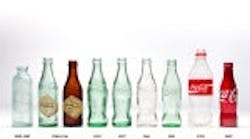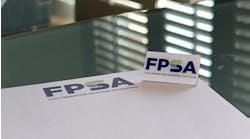Back in May, the Coca-Cola Foundation donated $1 million to support the Statue of Liberty-Ellis Island Foundation's Peopling of America Center (www.ellisisland.org), an initiative that will tell the story of the immigration experience in America.
Chairman and CEO Muhtar Kent of Atlanta-based Coca-Cola Co. (www.thecoca-colacompany.com) made the donation to mark the shared 125th anniversaries of these two American icons -- Coca-Cola, the world's most iconic and valuable global brand, and the Statue of Liberty, a gift to Americans by the people of France in October 1886, and America's best-known symbol of freedom.
"This grant will enable this center to tell the story of the remarkable people who built this nation, and who will continue to play a vital role in its future," said Kent.
"Coca-Cola has a deep connection to Lady Liberty, dating back to our shared birth years in 1886, extending to our commitment of $5 million to help restore the historic landmark in 1986 and now to helping improve Ellis Island's role as a place of inspiration and hope for people from around the world for years to come."
With a rich history of innovation, intrigue, marketing savvy, success and failure, Coca-Cola Co.'s portfolio contains more than 500 brands (3,500 beverages), serves its products to consumers in 206 countries at a rate if 1.7 billion servings a day, or about 19,400 beverages every second. And according to Ad Age, which named Coca-Cola its marketer of the year in 2011, the company spends $2.9 billion on advertising.
Created in 1886 by Atlanta pharmacist John Pemberton, Coca-Cola, the sweet, effervescent mix of syrup and carbonated water, flavored by coca leaves and kola nuts, was originally intended as a patenedt medicine. Pemberton's partner, Frank Robinson, came up with a catchy, alliterative name -- Coca-Cola -- and hand-lettered its logo in a fashionable Spencerian script, reports HubMagazine.com. During its first year, Coca-Cola sold only an average of nine glasses a day, at a nickel a glass, at Jacob's Pharmacy in Atlanta.
Coke's true secret is is the foresight of those individuals who built the brand: Asa Candler acknowledged the importance of branded merchandise and couponing in the late 1800s; Robert Woodruff envisioned Coca-Cola as a global brand in the 1920s; Steve Heyer declared in 2003 "Coca-Cola isn't a drink. It's an idea."
Ranking on Facebook as the most popular consumer brand, with nearly 26 million likes, Coca-Cola has nurtured one of the world's biggest social media operations, bringing its past accomplishments to a new generation of consumers. In fact Cocoa-Cola is the second-most widely understood term in the world, after okay.
"Coke has been about evolution and being a brand that is solidly embedded in certain values while also reflecting the mores of the times," Joe Tripodi, chief marketing and commercial officer, told The Hub in an interview. "The secret formula, then, isn't just the one jealously guarded in a vault somewhere in Georgia. It's also (the consistency) of Coke's recipe for holding onto its past while remaining pertinent in the present … and navigating its future. That's the Real Thing."
Speaking to Coke's culture, Tripodi said, "There's a positivity in the culture at Coke that it shares with the brand. Fundamentally, it's about the can-do spirit, the positive spirit that the people in the company have. That pushes all the way down to all of the social responsibility activities that Coke initiates, which really give the company an unbelievable ability to impact communities in a positive way." He added, "While Coca-Cola is a massive global business, it's all about how we balance that at a local level and how we connect — not only our brand to people who want to drink it, but also how we engage with, and support, local communities."
How does Coke create happiness? "No. 1, it's the bubbles," said Tripodi. "No. 2, it's a wonderfully uplifting drink. It goes down easy. When it's ice cold, it's spectacularly refreshing. When you combine that with optimism, Coca-Cola creates happiness. Coke is 125 years young, and the best is yet to come."
And from all of us at Food Processing, Merry Christmas, happy holidays, and we hope the best is yet to come for you, too. May 2012 bring you and your family prosperity, abundance, good cheer and, above all, happiness.
There's an interesting timeline of Coca-Cola historic moments
Coca-Cola Timeline
1886 Coca-Cola created by pharmacist John Pemberton and debuts in Jacobs' Pharmacy in Atlanta. It sells for 5 cents a glass at the soda fountain.
1888 Formula and patents acquired from John Pemberton by Asa Candler.
1892 Asa Candler finalizes the purchase and incorporates The Coca-Cola Co. as a Georgia corporation.
1899 The rights to bottle Coca-Cola sold to Benjamin Thomas and Joseph Whitehead of Chattanooga, Tenn., for $1.
1904 First advertising for Coca-Cola appears in national magazines.
1916 Root Glass Co. of Terre Haute, Ind., designs the contour bottle.
1919 Coca-Cola Co. purchased by a group of investors led by Ernest Woodruff for $25 million.
1923 Robert Woodruff becomes president of Coca-Cola Co. He leads the company for more than 60 years.
1925 Board of directors passes a resolution placing the secret formula in a bank vault.
1931 In an effort to link Coca-Cola with Christmas, artist Haddon Sundblom creates illustration showing Santa Claus pausing for a Coke.
1943 U.S. government requests Coca-Cola be available to the troops during World War II. Woodruff pledges to provide it the military for a nickel regardless of the cost to produce it.
1945 Coke becomes a registered trademark of Coca-Cola Co.
1950 Coke becomes the first product to appear on the cover of Time magazine.
1960 Coca-Cola buys Minute Maid Co., adding juices to its portfolio.
1963 Tab, the first diet drink from the company, introduced.
1981 Roberto Gouizeta becomes chairman and CEO.
1989 New slogan, "It's the Real Thing," launched.
1985 Coca-Cola changes its formulation to what was commonly called "New Coke." Outraged consumers rebel, and the original formula, renamed Coca-Cola Classic return to the market.
1985 Coke becomes the first soft drink consumed in space aboard space shuttle Challenger.
1986 Numerous U.S. bottling operations are organized into a new public company, Coca-Cola Enterprises Inc. (CCE)
2001 Coca-Cola and Nestle create Beverage Partners Worldwide to market coffee and tea beverages.
2004 Coca-Cola announces plans for Chairman and Chief Executive Doug Daft to retire at the end of the year. Coke's directors pick a retired Coke executive, E. Neville Isdell, as his successor.
2008 Muhtar Kent becomes CEO.
2009 Coca-Cola Freestyle, an innovative fountain dispenser that allows consumers to create more than 100 beverages, unveiled to foodservice. In 2011, it has 125 options.
2009 PlantBottle PET packaging, made partially from plant-based material, introduced. Bottles are completely recyclable.
2010 Coca-Cola acquires the entire North American bottling operation of CCE.


